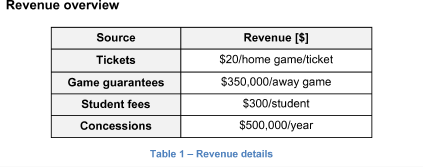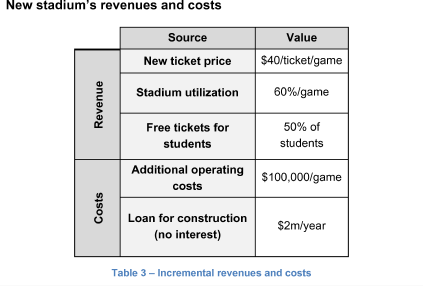College Football
15.1k
Times solved
Intermediate
Difficulty
Our client is a college that plans to add an inter-collegiate football team to its athletic program.
They have approached us in order to determine if that is a good idea.
Case Comments
I. Revenue – Question 1: What is the revenue per year?
II. Costs – Question 2: What are the resulting costs?
III. Investment – Question 3: Should the college build a stadium in order to gain membership in a powerful athletic conference (league)?
IV. Conclusion – Question 4: What is your recommendation to your client about introducing its own football team?
15.1k
Times solved
Intermediate
Difficulty
Do you have questions on this case? Ask our community!























